The Orion Nebula
Click on image for full size
NASA
Nebulae - The Dust of Stars
Why would we call nebulae stardust? Because the gas in nebulae is
used to make new stars, and dying stars create nebulae from their
gas. While stars are made of very hot, dense gas, the gas in nebulae
is cool and spread out. Water is at least 1,000,000,000,000,000 times
as dense as the gas found in nebulae.
Nebulae come in a variety of shapes. But their appearance is usually
due to the type of energy source which is lighting them up. There is
lot of gas that we can't see in the Galaxy. Something must happen for the
nebulae to reveal themselves.
So, what happens to make nebulae glow? It depends on the type of
nebulae. Some are involved in the formation of new stars. These are
stellar nurseries called HII
regions. The young stars found in HII regions are extremely hot
and provide a lot of energy for lighting up nebulae. Some nebulae are
created by dying stars: supernova
remnants and the planetary nebulae surrounding white
dwarfs.
You might also be interested in:
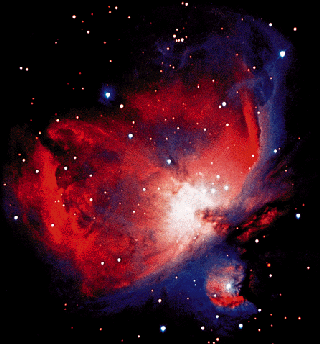
The Sun and planets began as a cloud of gas, just like the one shown in this picture. The cloud was probably made of hydrogen and helium gas (the same gas which goes into a helium ballon which you can
...more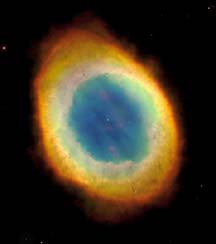
Scientists used the Hubble Space Telescope to look at the Ring Nebula (also known as M57). The nebula gets its name from its shape--it looks like a ring. The HST pictures show that the nebula is actually
...more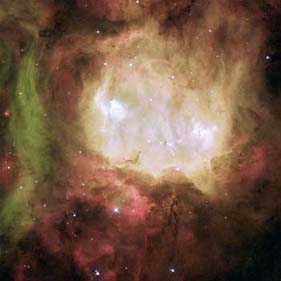
This image of the NGC 2080 nebula was taken by NASA's Hubble Space Telescope. Because it is red and white and green, it looks like something that could be on front of a holiday card! The name of the nebula
...more
The pictures released by Hubble Space Telescope's new Advanced Camera for Surveys (ACS) are nothing but FAR OUT! This new camera was put on Hubble during a servicing mission in March 2002. As can be seen
...more
Scientists are finding strong evidence thatspiral galaxies collide more often than once thought. It was once believed that one third of all the spiral galaxies have had a collision. However, a new camera
...more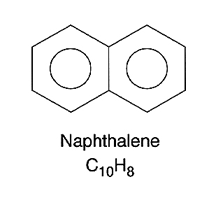
PAH is the short name for "Polycyclic aromatic hydrocarbons". Thank goodness this molecule has a short name! These are long strings of carbon atoms which form a ring. (That accounts for the "cyclic" and
...more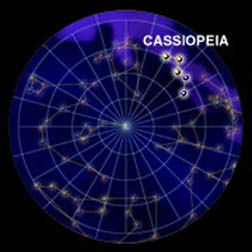
Cassiopeia was the wife of King Cepheus. She was very pretty, and would often brag that she and her daughter were more beautiful than the sea nymphs, the Nereids. They complained to Poseidon, who sent
...more
Draco the dragon is a circumpolar constellation, which means it revolves around the North pole. It can be seen all year round. Draco is only present in the Northern Hemisphere, so those living in the
...more














